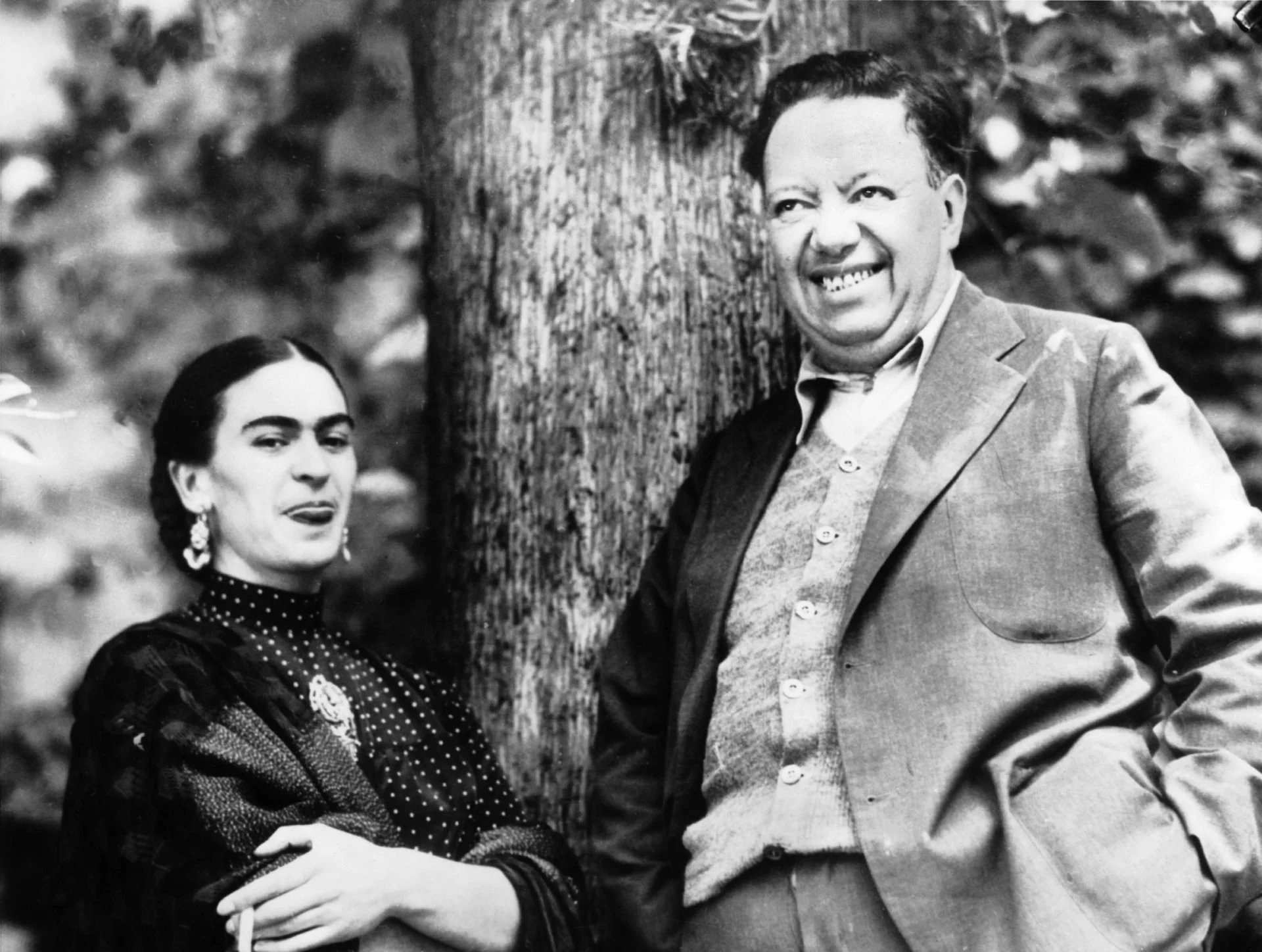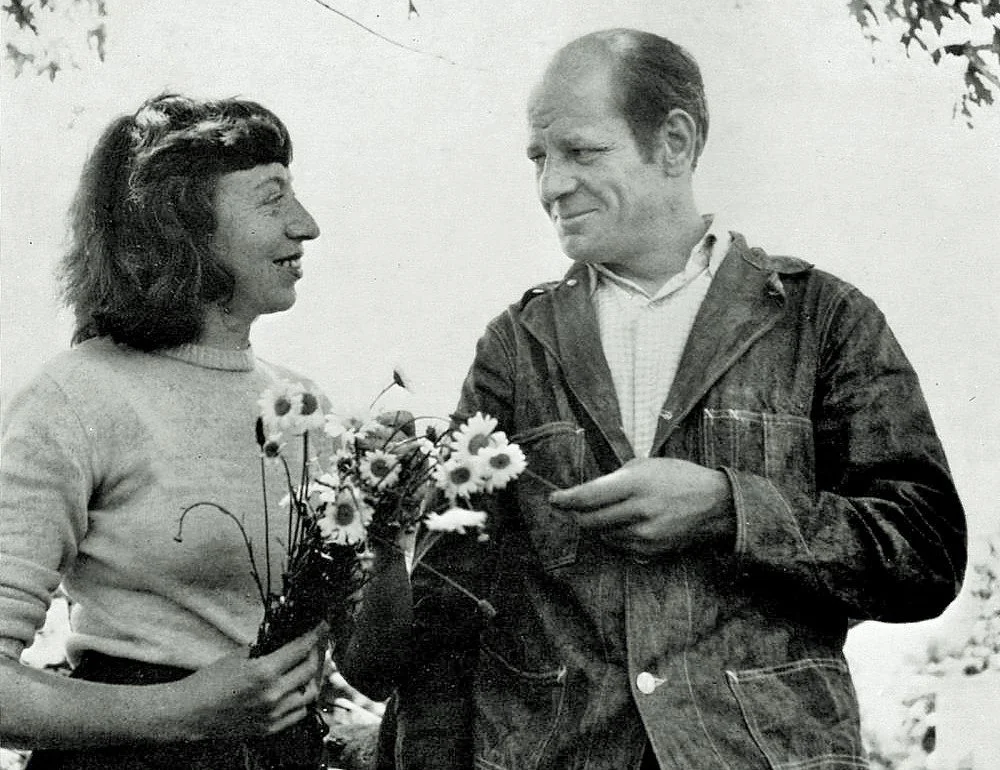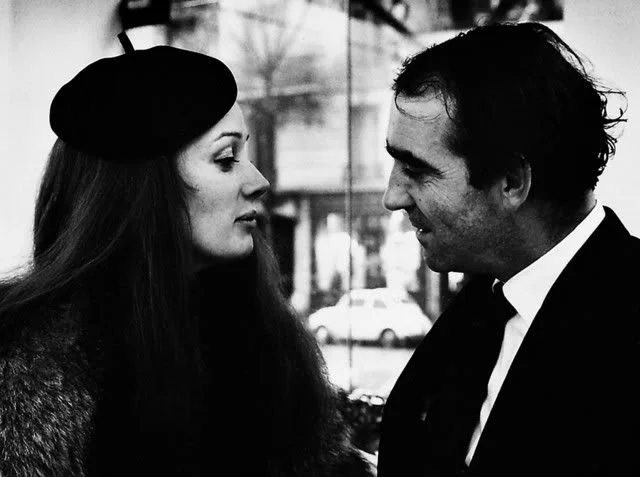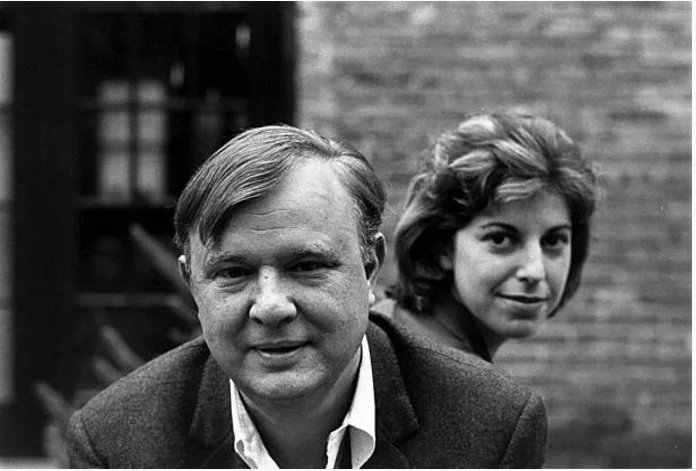Creative Couples: The Powerhouses of Artistic Collaboration
As we celebrate Valentine's Day and the ones we love , we celebrate not only the bonds of romantic love but also the profound connections forged through creative collaboration. Throughout history, the world of art has been enriched by the dynamic partnerships of creative couples whose collaborations have left an indelible mark on the artistic landscape. From shared visions to complementary talents, these couples have not only shaped each other's artistic journeys but have also made lasting contributions to the art world as a whole. We've created a list of such couples to honor their enduring impact and creative synergy.
1. Frida Kahlo and Diego Rivera:
Arguably one of the most iconic artistic couples of the 20th century, Frida Kahlo and Diego Rivera's tumultuous relationship was as vibrant as their art. Kahlo's deeply personal and introspective paintings, often depicting her own physical and emotional pain, contrasted with Rivera's monumental murals that celebrated Mexico's indigenous culture and revolutionary history. Despite their turbulent marriage, their influence on each other's work was profound, with Kahlo's surrealist style influencing Rivera's later works, and Rivera providing unwavering support for Kahlo's artistic endeavors.
(Frida Kahlo and Diego Rivera. Photo by Keystone-France)
2. Lee Krasner and Jackson Pollock:
Lee Krasner and Jackson Pollock were pioneers of the Abstract Expressionist movement, each making significant contributions to the development of modern art. Krasner, a talented abstract painter in her own right, played a crucial role in shaping Pollock's career, often serving as his sounding board and advocate. While Pollock's drip paintings garnered widespread acclaim, Krasner's innovative approach to abstraction challenged traditional notions of art and gender roles. Their artistic dialogue and mutual respect continue to inspire generations of artists today.
(Lee Kranser & Jackson Pollock in Springs, London Island, 1949. Photograph: Wilfred Zogbaum)
3. Georgia O'Keeffe and Alfred Stieglitz:
The relationship between Georgia O'Keeffe, known for her striking depictions of flowers and landscapes, and Alfred Stieglitz, a pioneering photographer and gallery owner, epitomized artistic collaboration and mutual admiration. Stieglitz's intimate portraits of O'Keeffe not only captured her essence but also elevated her status as a groundbreaking artist. Their partnership bridged the gap between photography and painting, blurring the lines between reality and abstraction, and forever changing the course of American art.
(Image: Stieglitz and O'Keeffe. Courtesy Bettmann / Contributor)
4. Christo and Jeanne-Claude:
As masters of large-scale environmental art installations, Christo and Jeanne-Claude redefined the boundaries of artistic expression through their monumental projects. From wrapping iconic landmarks like the Pont Neuf in Paris to installing thousands of vibrant umbrellas across landscapes, their works transcended traditional art spaces and invited viewers to experience art in unexpected ways. Their collaborative spirit and unwavering dedication to realizing their vision together left an indelible mark on the art world, inspiring awe and wonder in all who encountered their ephemeral creations.
(Christo and Jeanne-Claude. Photography by Bob Kiss)
5. Louise Bourgeois and Robert Goldwater:
Louise Bourgeois, celebrated for her deeply evocative sculptures exploring themes of femininity and family dynamics, found a kindred spirit in her husband, art historian Robert Goldwater. Goldwater's scholarly insights into primitive art and psychology provided a rich intellectual framework for Bourgeois's artistic explorations. Together, they fostered an environment of intellectual curiosity and creative exchange, shaping Bourgeois's artistic practice and influencing the trajectory of modern sculpture.
(Louise Bourgeois and Robert Goldwater. Photo by Fred W. McDarrah)
6. Jasper Johns and Robert Rauschenberg:
Jasper Johns and Robert Rauschenberg were leading figures of the post-war American art scene, known for their groundbreaking contributions to Pop Art and Neo-Dadaism. Their romantic relationship in the 1950s fueled a collaborative artistic exchange characterized by experimentation and innovation. Their works, often blurring the lines between painting, sculpture, and everyday objects, challenged conventional artistic norms and paved the way for a new era of artistic expression.
(Robert Rauschenberg and Jasper Johns in Johns’s Pearl Street studio, New York, NY, United States, circa 1954. Photo: Rachel Rosenthal)
7. Sonia Delaunay and Robert Delaunay:
Sonia Delaunay and Robert Delaunay were key figures in the development of Orphism, a movement characterized by vibrant colors and geometric abstraction. Together, they explored the interplay of color and form, creating dynamic compositions that exuded energy and rhythm. Their innovative use of color theory and simultaneous contrast influenced generations of artists and designers, leaving an indelible mark on the trajectory of abstract art.
(Portrait of Sonia and Robert Delaunay in front of Robert Delaunay’s ‘Helice’, 1923)
8. Elaine de Kooning and Willem de Kooning:
Elaine de Kooning and Willem de Kooning were central figures in the Abstract Expressionist movement, known for their bold and gestural paintings. While Willem gained fame for his dynamic brushwork and expressive canvases, Elaine carved out her own artistic identity with her vibrant portraits and figurative paintings. Their marriage, characterized by mutual admiration and artistic camaraderie, served as a catalyst for their creative exploration and individual growth as artists.
(Elaine and Bill de Kooning, 1953. Courtesy of Bridgeman Images.)
9. Niki de Saint Phalle and Jean Tinguely:
Niki de Saint Phalle and Jean Tinguely were artistic mavericks known for their whimsical and kinetic sculptures. Their shared love for unconventional materials and playful experimentation led to the creation of large-scale, interactive artworks that captivated audiences around the world. Whether through Saint Phalle's colorful Nanas or Tinguely's intricate mechanical contraptions, their collaborative endeavors celebrated joy, movement, and the boundless possibilities of artistic expression.
(Niki de Saint Phalle and Jean Tinguely. Photographer Unknown)
10. Anni Albers and Josef Albers:
Anni Albers and Josef Albers were pioneers of modernist art and design, known for their innovative approaches to textile design, weaving, and color theory. Anni's intricate textile compositions, characterized by geometric patterns and meticulous craftsmanship, complemented Josef's iconic series of Homage to the Square paintings, which explored the visual effects of color interaction. Together, they championed the idea of art as a collaborative and interdisciplinary practice, inspiring generations of artists, designers, and educators.
(Josef and Anni Albers at Black Mountain College in 1949. Photo: Theodore Dreier)
11. Charles and Ray Eames:
Charles and Ray Eames were visionary designers who revolutionized the fields of architecture, furniture design, and filmmaking. Through their pioneering use of materials, innovative production techniques, and timeless aesthetic sensibility, they created iconic designs that continue to influence modern design aesthetics. Their collaborative approach, rooted in a shared commitment to experimentation and problem-solving, produced groundbreaking works such as the Eames Lounge Chair and the Powers of Ten film, which have become enduring symbols of creativity and innovation.
(Charles and Ray Eames “pinned” by chair bases, 1947. © 2011 Eames Office, LLC)
12. Barkley L. Hendricks and Susan Hendricks:
Barkley L. Hendricks, known for his iconic portraits of African American subjects, found artistic and personal companionship with Susan Hendricks, his wife and fellow artist. Susan's influence on Barkley's work was profound, as she encouraged him to explore themes of identity, race, and representation in his paintings. Their collaborative spirit extended to their shared passion for teaching and mentoring young artists, leaving an enduring legacy of artistic excellence and cultural activism.
(Susan Hendricks poses with her husband, Barkley L. Hendricks, near her portrait, Ma Petite Kumquat, which Barkley painted in 1983. Photo by Trevor Schoonmaker.)
13. Bernd and Hilla Becher:
Bernd and Hilla Becher were influential photographers known for their systematic documentation of industrial architecture, particularly water towers, blast furnaces, and other industrial structures. Through their collaborative practice, they developed a rigorous approach to photography characterized by objective framing, uniform composition, and a focus on functional structures. Their typological studies not only preserved the disappearing industrial landscape but also elevated it to the realm of fine art, inspiring generations of photographers and artists to find beauty in the everyday.
(Bernd and Hilla Becher. Photo by Interfoto/Alamy)
14. Barbara Hepworth and Ben Nicholson:
Barbara Hepworth and Ben Nicholson were leading figures of the modernist movement in British art, known for their abstract sculptures and paintings. Their artistic partnership, which blossomed during their marriage in the 1930s, was characterized by a shared exploration of form, space, and materiality. Hepworth's organic and sensual sculptures, often carved from stone or wood, complemented Nicholson's abstract paintings, which explored geometric shapes and spatial relationships. Together, they created a visual dialogue that transcended individual artistic boundaries, leaving an indelible mark on the trajectory of modern art in Britain.
(Barbara Hepworth and Ben Nicholson in 1932.)
15. Kerry James Marshall and Cheryl Lynn Bruce:
Kerry James Marshall, a renowned painter known for his powerful depictions of African American life and history, shares a creative partnership with Cheryl Lynn Bruce, his wife and collaborator. Bruce, an accomplished actress and playwright, has been a source of inspiration and support for Marshall throughout his career, influencing his approach to storytelling and narrative construction. Their partnership extends beyond their individual artistic practices, as they collaborate on interdisciplinary projects that engage with issues of race, memory, and cultural identity.
(Kerry James Marshall and Cheryl Lynn Bruce. Photo by: Vladimir Weinstein)
16. Helen Frankenthaler and Robert Motherwell:
Helen Frankenthaler, known for her pioneering use of stain painting techniques, and Robert Motherwell, a leading figure of the Abstract Expressionist movement, shared a deep connection rooted in their mutual love for art and intellect. Their artistic collaboration extended beyond their personal relationship, as they engaged in a dialogue of ideas and techniques that enriched their individual practices. Frankenthaler's luminous color fields and Motherwell's bold gestural abstractions exemplified their shared commitment to pushing the boundaries of abstract art.
(Robert Motherwell & Helen Frankenthaler. A lovely portrait of a talented couple, by Hans Namuth for Vogue 1964)
17. Yoko Ono and John Lennon
Yoko Ono, a pioneering multimedia artist and peace activist, found both love and creative partnership with John Lennon, the legendary musician and member of The Beatles. Their collaborative works, such as the "Bed-In for Peace" and the "War is Over! (If You Want It)" campaign, used art as a platform for promoting peace and social justice. Together, they challenged conventional notions of celebrity and artistry, inspiring millions around the world to envision a more peaceful and compassionate future.
(Yoko Ono; John Lennon, by Tom Blau)
















